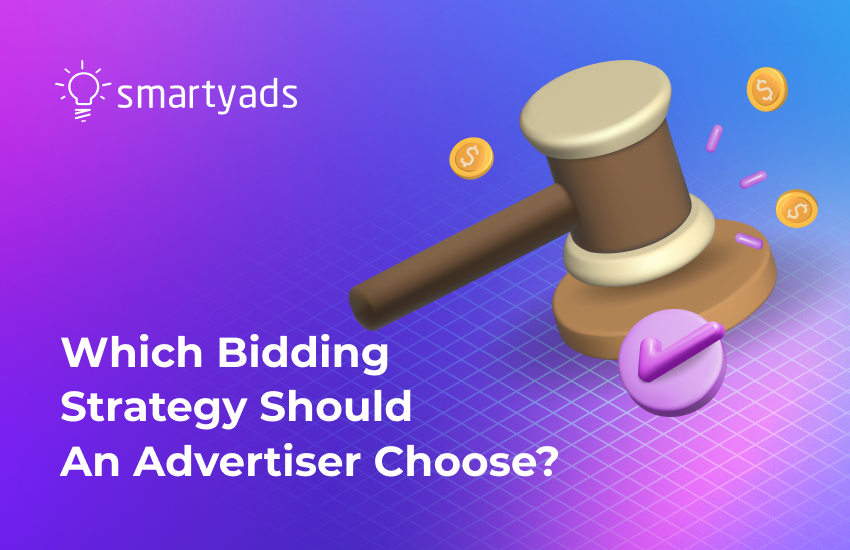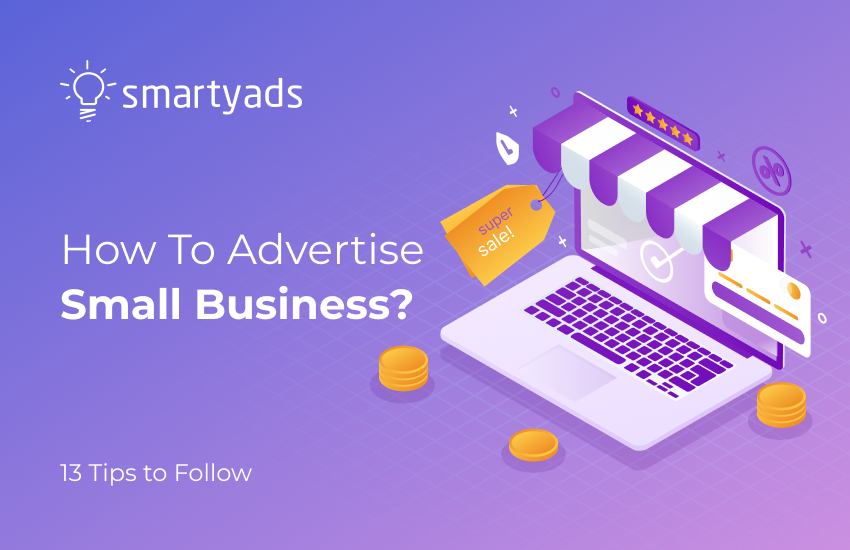The most significant share of the search engine market belongs to Google, accounting for 93% or over nine billion searches daily.
This impressive number gives plenty of opportunities and sets many challenges for marketers and brands. One is making product promotion visible to a broad audience.
Therefore, advertisers should integrate bidding strategies into their activities to achieve fast and effective results. Let's delve into the basics of visibility and discover the best bidding strategies in display and programmatic advertising.
Understanding the gist of visibility
Visibility allows tracking brand awareness and engagement, letting advertisers monitor consumers' initial touchpoints with brand offerings and expand their reach.
When visibility is the campaign goal, marketers tap into various communication channels to convey their message and ensure that their brand stays in the ears and eyes of potential and loyal customers.
Be it advertising on social media, search engines, or other platforms, an ad is visible if it is viewable. Simply put, every ad should comply with specific industry standards to ensure people see it. What are these standards?
The technical side of ad visibility
According to the survey, the global viewability rate of display ads on the mobile web was 66.9%, and on desktop, the rate stood at 71.5% in the first half of 2022.
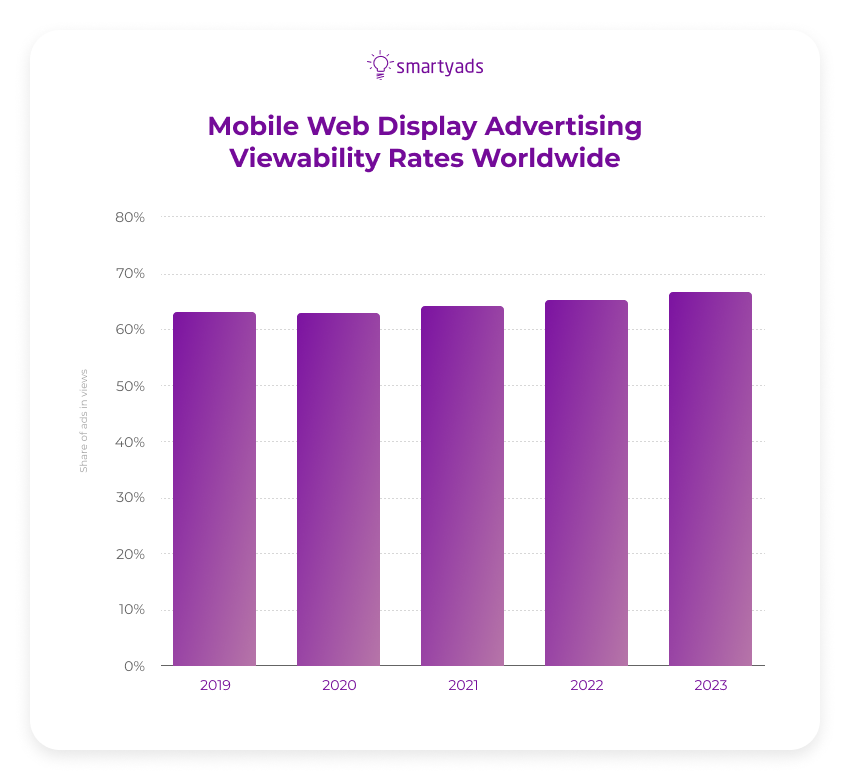
Is your ad visible in this ocean of daily creative consumption?
To make sure it is, IAB guidelines shed light on some technical peculiarities to maximize conversions and grow brand awareness.
Time and pixel requirements
To meet the pixel requirement, at least 50% of the ad's pixels must be in the viewable area of the page. The time requirement threshold for this pixel should be at least one uninterrupted second following the rendering of the ad.
User interaction
An ad is considered viewed when a user interacts with it, even if the advertisement doesn't meet pixel and time criteria. Following IAB's guidelines, a click on the ad qualifies as "strong user interaction" for viewability, while a simple mouse-over usually isn't enough.
Ad Appearance
Ads are counted as visible if they emerge in the browser window and meet the viewability criteria mentioned above.
These are only some criteria for sufficient ad visibility. Let's get down to the nitty-gritty of the bidding strategy.
Bidding strategy
A bidding strategy is a cost for impressions and interactions with advertisements. Various bidding strategies help optimize ad spend and reach specific campaign goals, such as raising return on investment (ROI), driving leads, boosting visibility, etc.
Bidding strategies that are available across digital platforms:
- Search engine advertising (Google ads): bidding on keywords;
- Social media advertising (Facebook ads, Twitter ads): bidding to optimize clicks, impressions, or conversions;
- Video advertising (YouTube ads): bidding on video views, clicks, or other actions;
- Mobile advertising: bidding on ads on mobile devices;
- Display advertising: bidding on ad placements on websites and apps;
- Programmatic advertising: automated bidding at the real-time auctions.
Which bidding strategy should an advertiser choose in order to meet a campaign goal of visibility?
Now, we'll focus on an automated bid strategy, a smart bidding strategy, a target impression share bidding strategy, and CPM bidding as the most effective approaches to visibility growth.
Automated bid strategy in programmatic advertising
Automatic bidding is ideal for advertisers who want to get the most out of their ad budget. Powered by machine learning algorithms and real-time data, the auto-bidding strategy allows to set bids without calculating the maximum CPC bid to reach the best results.
Using an automated bid strategy will automatically optimize your bids based on the likelihood of converting. The automated bidding leverages information about user behavior and historical campaign performance to define the value of ad impressions and make instant bidding decisions.
If a user with a high likelihood of converting is browsing a webpage, the algorithm might increase the bid to secure that impression. The system applies data about the previous performance to make future bids cost-effective.
Effective decision-making with smart bidding
A smart bidding strategy is most common for the Google Ads platform and looks to improve visibility and maximize conversions. This subcategory of automated bidding facilitates optimizing conversion value at auction-time bidding.
The system automatically sets bids and tries to capture the peculiarities of every search through signals, known as identifiable attributes. They hold information about the user's device, operating system, language, location, and even the time of day.
Smart bidding on Google Ads functions similarly to real-time bidding on the programmatic platforms. Advertisers choose the required criteria to target audiences with proper ads. For example, they show their ads to users with a particular operating system and at a specific time of day.
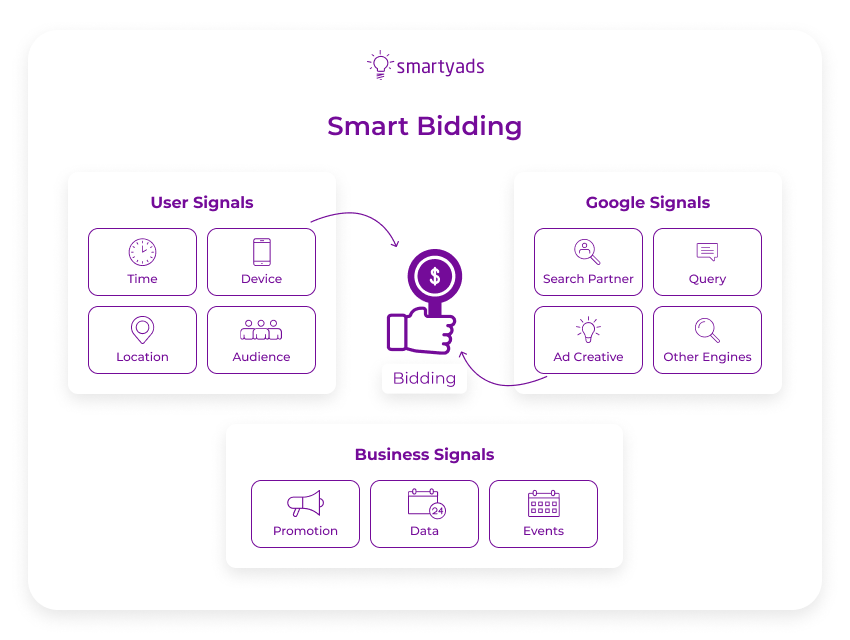
Which type of automated bidding strategy is enhanced cost-per-click (ECPC)?
The enhanced cost-per-click (ECPC) is a facet of the smart bidding strategy that balances control over bid strategies with harnessing auction-time bidding driven by ML. ECPC employs historical data and contextual cues to refine cost-per-click (CPC), predicting conversion likelihood.
Why should an advertiser choose target impression share bidding
Target impression share bidding strategy is a subset of smart bidding available on the Google Ads platform. This approach allows for improving brand consideration and eliminating a negative impact on the ad perception.
How target impression share works
With a target impression share bidding strategy, advertisers compete for their ad to display at the top of the search engine result page (SERP) and gain more impressions.
Advertisers can opt for target impression share types — the area for the ad display. It can be at the absolute top of the search results or anywhere on the search results page.
To do that, they set the percentage of the total available ad impressions they want to reach. The higher the percentage of target impression share, the larger the audience sees the ads. Conversely, the lower target impression share means a limited ad reach.
The best way to implement target impression share bidding is by starting with lower percentages, tracking performance, and gradually elevating the target impression share to adjust the percentage with a visibility campaign goal.
How to calculate a target impression share?
Impression share is the ratio of the times ads are shown and the total number of opportunities (eligible impressions) for ads to showcase.
Target impression share is a correlation between the number of target impressions and the total number of opportunities (eligible impressions).
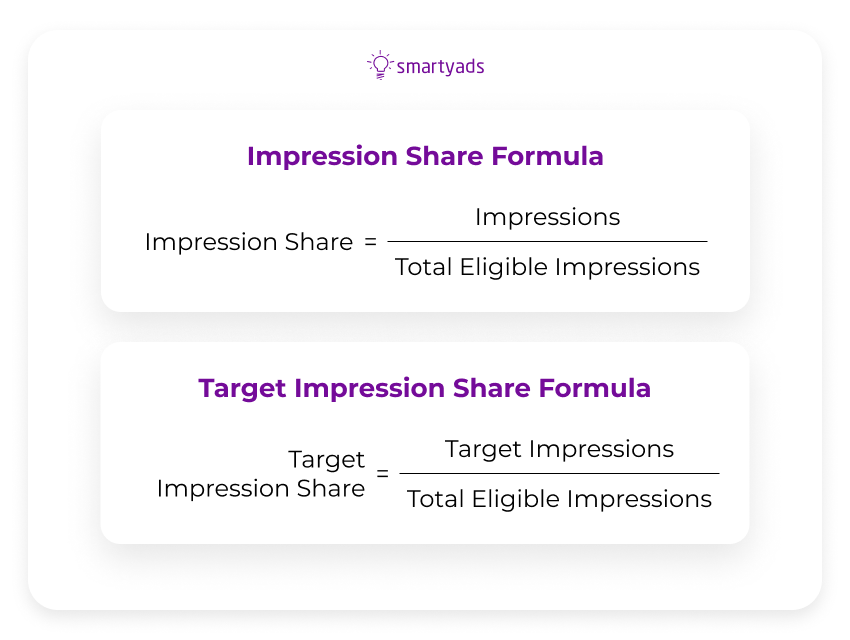
Why programmatic CPM bidding is best for visibility?
CPM in programmatic advertising refers to a paid ad model per thousand impressions. Unlike other options (CPM, CPI, CPC, CPA), programmatic CPM bidding provided by SmartyAds increases visibility and brand awareness due to its high efficiency and cost-effectiveness.
It's important to understand two factors about programmatic CPM. First, impressions are cheaper than clicks. And second, the ad campaign will not stop once it reaches a paid number of clicks.
By choosing a CPM model, advertisers can be sure that their ad displays until a certain number of impressions gets released, despite the number of clicks it generates over this time.
Wrapping up
Having customers know about your brand is vital for business development. It's a kind of achievement that should be maintained all the time. Visibility, in this term, measures how companies succeed in this challenge.
Properly picking and executing the best bidding strategy is a complex but feasible task. You can try to do it on your own or use a reliable programmatic platform. SmartyAds holds many years of expertise in implementing a bid strategy and can help you profit. Try it out!
Increase brand visibility and awareness with SmartyAds DSP!
